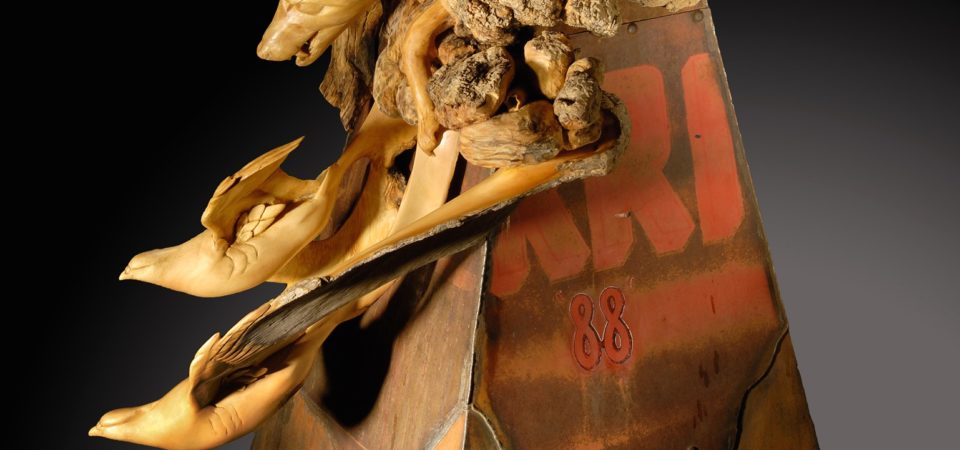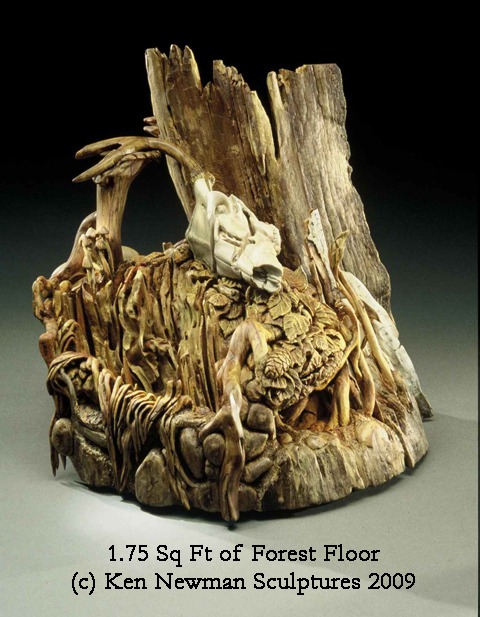Idaho sculptor, Ken Newman, a member of several art organizations including the National Sculpture Society and the Society of Animal Artist, has worked in raw forms of wood for over 30 years. His sculptures feature animals, flora and fauna and figurative subjects. Most important is the narrative found in each work of art. In this post, Newman shares some of his pieces and their narratives. You can find more of Newman’s work through kennewmansculptures.com.
Defying the Wind
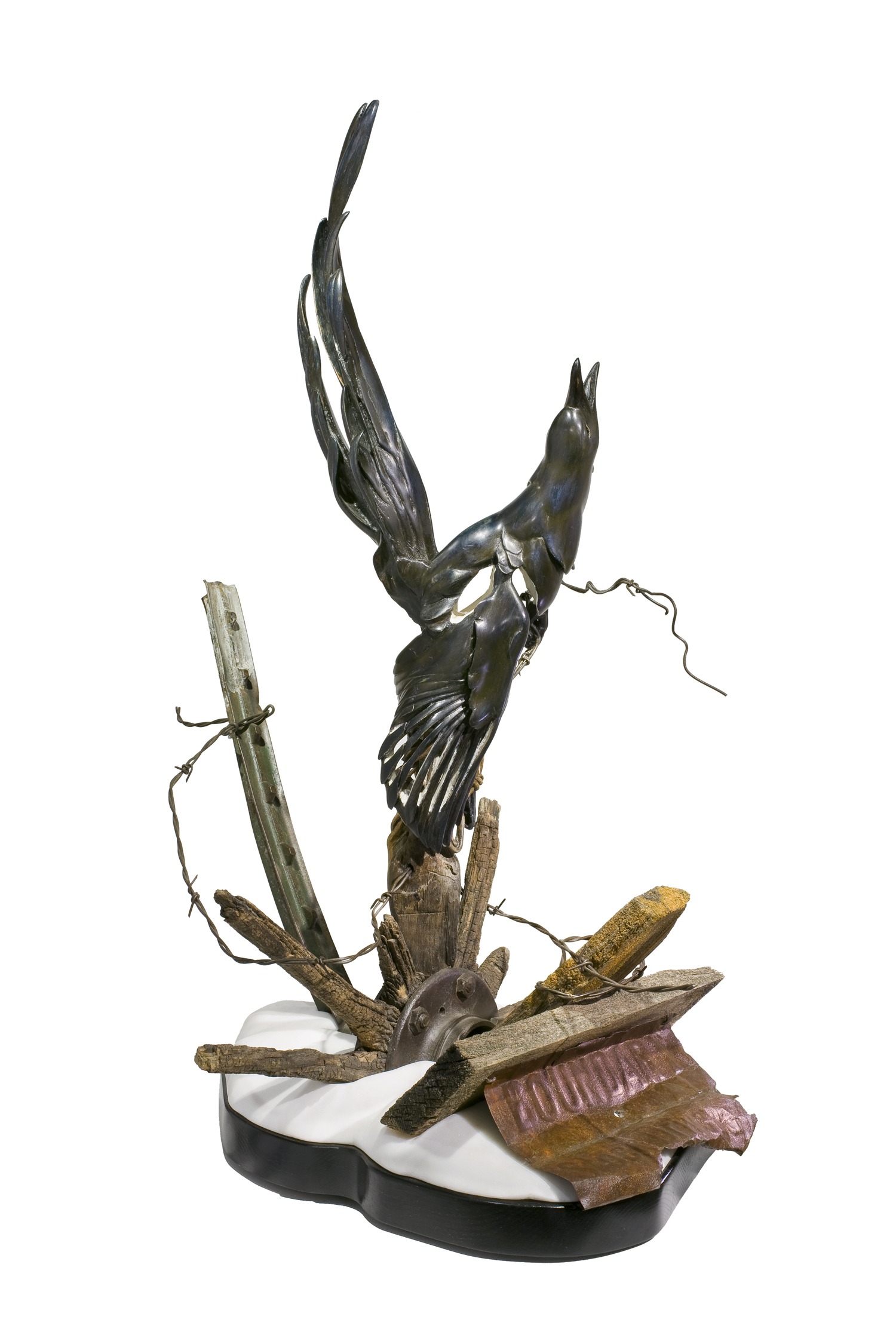
This visually expressive mixed media sculpture, explores boundaries, both in society and in our mind. It has my typical single piece of wood component (oak) combined with an antique wheel hub, an old sign post and metal sign, barb wire, and a metal fence post, which are mounted on carved statuary marble. All combined, the sculpture creates a societal statement as well as highlighting the beauty of nature.
Defying the Wind -URI Boundaries poses the Magpie strategically perched on one foot while holding barb wire in the other, its tail blown up and cast off balance by a gust of wind. In society, the winds of change are determined or swayed by knowledge, technology, research or profit. The magpie once had a bounty, considered a nuisance bird by people. Now protected, the winds change, the birds purpose in nature is better understood by society. Just like the wind, our attitudes change depending on the wind’s direction. The white in the magpie is removed throughout the wood sculpture, representing the unique patterning of the magpie as it is seen especially in the snow, the white of the bird disappears.
In Robert Frost’s poem Mending Walls Frost states that “Good fences make good neighbors” or do they? How do these fences/boundaries impact the land, nature, wildlife and man? Man moved west using the wheel, drawn by the open skies, vast prairies and wide open landscapes. As man moved west the first thing many did was to fence and control the land and its assets, stock, wildlife, homes and their neighbors. This sculpture questions, how do we individually restrict ourselves and others with fences and boundaries (both physical and mental)? The lines in this sculpture were inspired by a Japanese flower arrangement.
Precipitous Drop
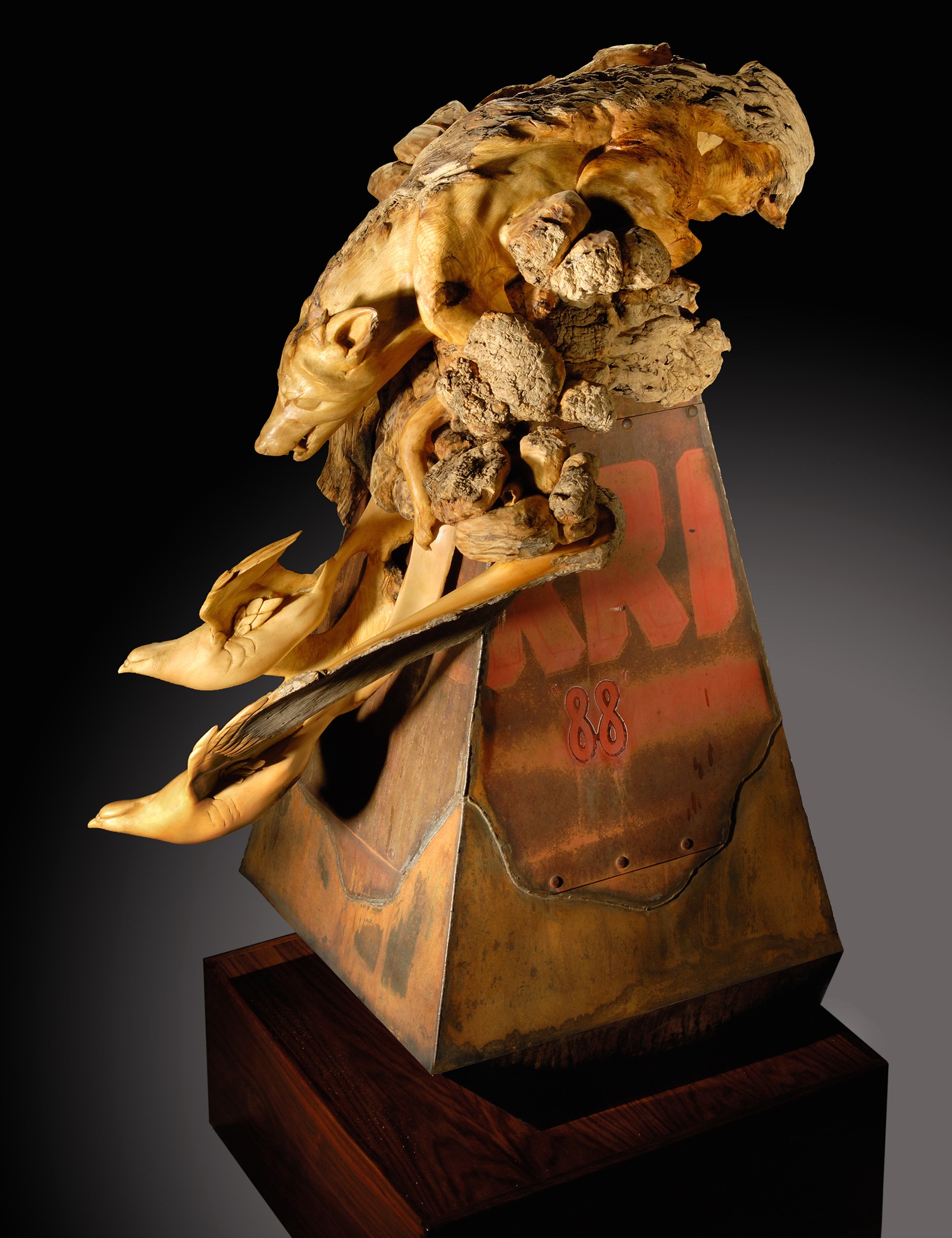
A predator pursues its prey, what calculations must the coyote make? Success verses risk of injury or death. This natural happening occurs precariously atop a rock ledge, or is it natural? Precipitous Drop is an interpretation of man’s meddling and impact on nature. If not for man, would the coyote and chukar have ever crossed paths?
What calculations must a predator take to pursue its prey? Most predator-prey scenarios are calculated, the percentage of success vs. injury is considered. It may be that the coyotes calculations was in error –the coyote perilously is holding on by one rear foot, it may have selected the wrong prey today.
In the rocky and arid west, the adopted Eurasian chukar has flourished, while the coyote is the poster child for adaptation. Injury is probable, to its ribs and foot taken by his aggressive action. For now nature sits atop man’s pinnacle, a geometric mountain of metal from an abandoned combine wheat harvester, its natural patina so perfectly captures the color of rocky ledges.
Tale of Respect
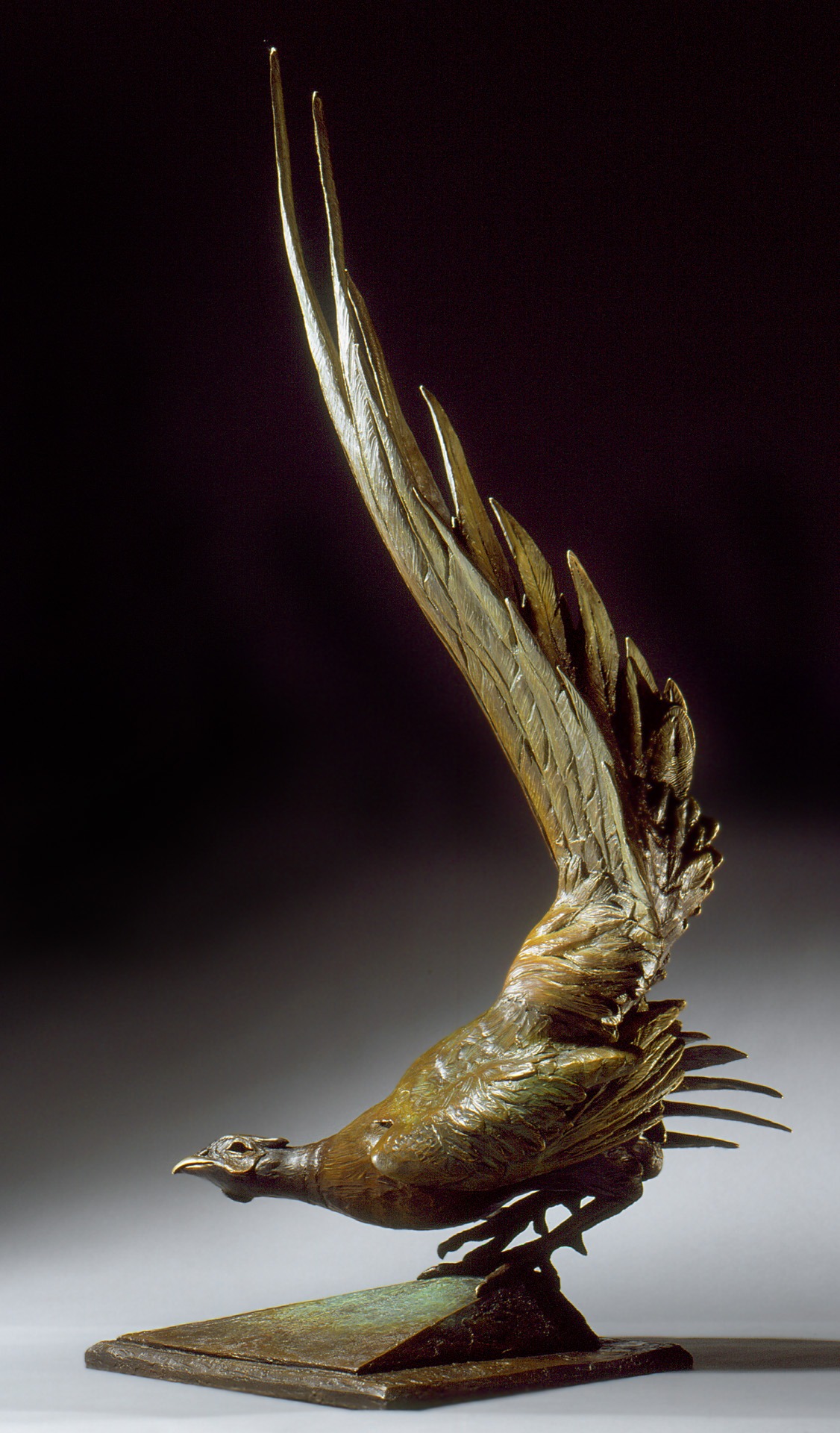
Creating a posture that expresses the dynamic nature of a pheasant while accentuating an artistic line was the challenge. This posture only existed inside of me and may not be a natural representation of the bird. So, the bird’s posture and artistic line are a reflection of my own life experiences, attitudes and understanding of nature and not that of a camera lens.
The struggle of expressing an artistic concept while structuring my first armature, developing textures to move the eye and trying to visualize a patina that would complement the design represented a formidable challenge. These challenges are what drive the next sculpture.
As a sportsman, Tale of Respect not only reflects the historical pheasant hunting tradition, but my personal experiences in the fields. Several years ago, when I arrived home in the spring, I was greeted by the call of a lone male pheasant in search of a mate. The diligence at which he crowed on the half hour became almost heart felt for our local population has declined. The decline is both nature and man related; weather, predation, agricultural change and development. This image will be with me for a lifetime. For now, I must keep the lab fresh and conditioned and only test their abilities against those of the clever pheasant.
Standing on a single slender leg (foot) accentuates the pheasant’s dynamic posture and precarious relationship with man. This bird’s continued existence, as much as with most wildlife, is based on man and economics.
Pheasant Sculpture Recipe
- Undying respect
The magnet that pulls one outdoors
- Building friendships
Sons and fathers
- Love affair with the amazing lab
Appreciation for all things wild
Out to the studio. Bending and twisting that armature wire. Push, pull and tool the clay, but to no avail. Until searching your soul will you find that pheasant which exists only in your mind. Out of the studio you come with “Tale of Respect” in hand.
Reflect, Appreciate and Explore the Cycle of Life –1.75 Sq Ft of Forest Floor
The traces and clues found on the forest floor tell a story. To the individual who chooses to spend a few moments, they can explore and discover the many cycles and transitions that can exist in an environment.
Explore life, death and the forest’s regeneration or rebirth. In the sculpture there are at least three signs of the life, death, regeneration or rebirth. There is a subtle representation of man’s impact on the natural forest cycles.
Why is there a fir cone in a broad leaf forest?
Is it a transition of the forest or is it happenstance? Will the fir cone survive and seed a new and different forest?
How young or old is the buck that died represented in the sculpture, is it an old buck who has succumbed to a poor habitat, man’s involvement, or over population? Tooth wear and length can determine an animal’s age.
Working in a single piece of wood requires flexibility and forethought. In the early stages, a major structural adjustment led to a much stronger circular design, which opened a creative avenue that allowed the sculpture to test my perception of nature and art.
1.75 Sq Ft of Forest Floor was included in the 43th Annual Society of Animal Artists’ Exhibition at the Hiram Blauvelt Art Museum in Oradell NJ. Art and the Animal Tour at the Wildlife Experience in Parker CO © Ken Newman
This post is part of the MAHB’s Arts Community space –an open space for MAHB members to share, discuss, and connect with artwork processes and products pushing for change. Please visit the MAHB Arts Community to share and reflect on how art can promote critical changes in behavior and systems and contact Erika with any questions or suggestions you have regarding the new space.
MAHB-UTS Blogs are a joint venture between the University of Technology Sydney and the Millennium Alliance for Humanity and the Biosphere. Questions should be directed to joan@mahbonline.org.
MAHB Blog: https://mahb.stanford.edu/creative-expressions/sculptured-narratives/
The views and opinions expressed through the MAHB Website are those of the contributing authors and do not necessarily reflect an official position of the MAHB. The MAHB aims to share a range of perspectives and welcomes the discussions that they prompt.

